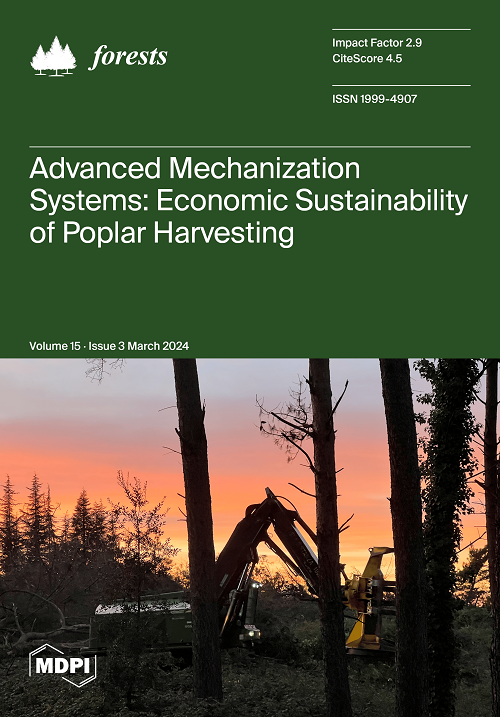Analysis of Height Growth Suggests Moderate Growth of Tilia cordata and Acer platanoides at the Native Hemiboreal Stands in Latvia
IF 2.5
2区 农林科学
Q1 FORESTRY
引用次数: 0
Abstract
In the Eastern Baltics, climatic changes are expected to alter forest composition favouring broadleaved species. The height growth of trees influences the productivity of stands and the competitiveness of species, particularly in mixed sites, thus emphasising the necessity for accurate projections. Accordingly, height models are paramount for projecting productivity and yields of stands. As tree height growth dynamics vary regionally, regional or even local models are needed. Based upon 214 National Forest Inventory plots and 510 individual canopy trees, dominant height growth for small-leaved lime (Tilia cordata Mill.) and Norway maple (Acer platanoides L.) in Latvia were analysed. Height growth was modelled using a generalised algebraic difference approach, testing several non-linear equations. The Sloboda (for lime) and Hossfeld I (for maple) models showed the best fit and were the most realistic, predicting slower initial and middle-age (maturing period) growth, yet also displayed higher asymptotes compared to Western Europe. The predicted height at the age of 80 years was 14–33 m and 13–34 m for lime and maple, accordingly. A longer establishment period and later growth culmination suggest longer rotation, highlighting the assessment of long-term risks. In this case, supplementation of the models with climatic effects appears advantageous.高度增长分析表明拉脱维亚原生半坡树丛中的椴树和槭树生长适中
在东波罗的海地区,预计气候变化将改变森林构成,使其更倾向于阔叶树种。树木的生长高度会影响林分的生产力和树种的竞争力,尤其是在混交林地,因此需要进行准确的预测。因此,高度模型对于预测林分的生产力和产量至关重要。由于树木高度生长动态因地区而异,因此需要建立地区甚至地方模型。根据 214 个国家森林资源调查地块和 510 棵冠层树,分析了拉脱维亚小叶椴(Tilia cordata Mill.)和挪威枫(Acer platanoides L.)的主要高度生长情况。采用广义代数差分法建立了高度增长模型,测试了几个非线性方程。Sloboda(石灰)和 Hossfeld I(枫树)模型的拟合效果最好,也最符合实际情况,预测的初始和中年(成熟期)生长速度较慢,但与西欧相比,也显示出较高的渐近线。椴树和枫树 80 岁时的预测高度分别为 14-33 米和 13-34 米。较长的建立期和较晚的生长顶点表明需要更长时间的轮作,这突出了对长期风险的评估。在这种情况下,利用气候效应对模型进行补充似乎是有利的。
本文章由计算机程序翻译,如有差异,请以英文原文为准。
求助全文
约1分钟内获得全文
求助全文
来源期刊

Forests
FORESTRY-
CiteScore
4.40
自引率
17.20%
发文量
1823
审稿时长
19.02 days
期刊介绍:
Forests (ISSN 1999-4907) is an international and cross-disciplinary scholarly journal of forestry and forest ecology. It publishes research papers, short communications and review papers. There is no restriction on the length of the papers. Our aim is to encourage scientists to publish their experimental and theoretical research in as much detail as possible. Full experimental and/or methodical details must be provided for research articles.
 求助内容:
求助内容: 应助结果提醒方式:
应助结果提醒方式:


